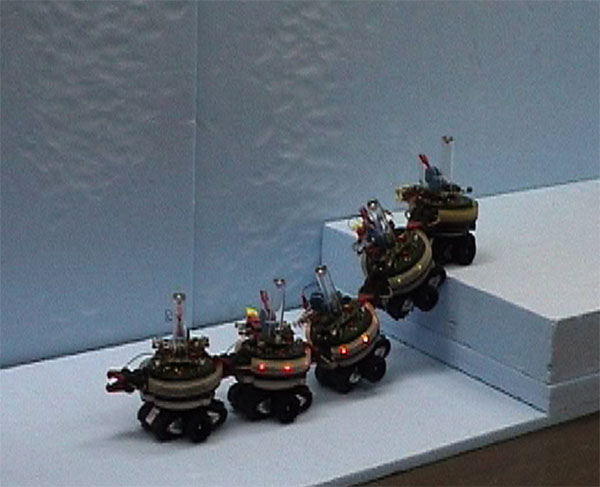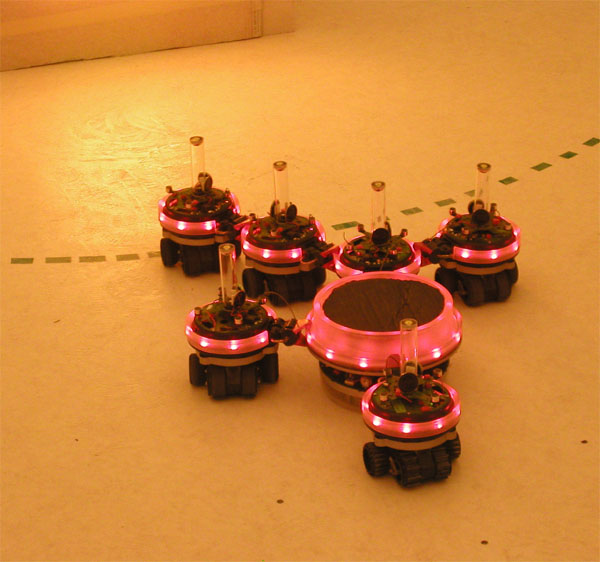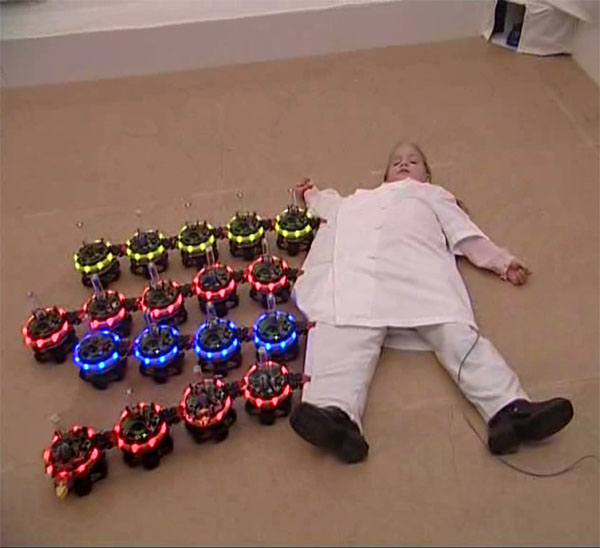|
Swarm-bots demonstration videos
Passing a step
A swarm-bot in chain configuration displayed the ability to pass obstacles
of the same height of a single s-bot robot:

(click on image to get the video)
Self-assembling and object transportation
S-bots are capable of autonomous self-assembly by combining
vision for long-range information, proximity sensors for local
adjustments, and sensors in the gripper for secure grasping. The
control strategies that allow a swarm of connected s-bots to move
in a coordinated fashion were evolved in physics-based simulation
and successfully used with the real robots. Those strategies are
useful for coordinated transportation of an heavy object toward a
goal, exploiting a combination of vision and lateral force sensors
on the robot body.

(click on image to get the video)
Pulling a child
Most of the s-bot capabilities were exploited in an experiment
where twenty s-bots self-assemble into four swarm-bots to pull a
child on the floor: The experiment was carried out in
semi-autonomous mode. The user specifies the number of swarm-bots,
the distribution of the s-bots in the swarm-bots, the global
localization of the child and the global actions timing. The
s-bots perform in autonomous mode the precise localization of the
grasping location on the child, the approach and the
self-assembling process.

(click on image to get the video)
| 


